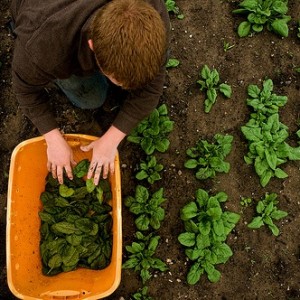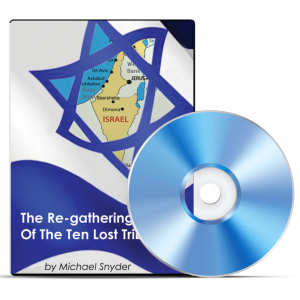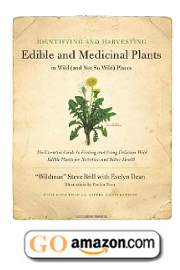 Years ago, I heard a minister telling his flock that the practice of taking vitamin supplements amounts to a waste of money, and that the only noticeable change resulting from taking supplements is a change in the color of urine. His claim was that, when one swallows a supplement tablet or capsule, everything in the tablet gets on a non-stop fast track to urine. That minister’s opinion reminds me of the opinion which the U.S. Food and Drug Administration (F.D.A.) pushes. If a label on a supplement container tells of any health benefit of that supplement, your government forces distributors of so-labeled nutritional supplements to post the followingon their labels. “These statements have not been evaluated by the Food and Drug Administration. This product is not intended to diagnose, treat, cure, or prevent any disease.”
Years ago, I heard a minister telling his flock that the practice of taking vitamin supplements amounts to a waste of money, and that the only noticeable change resulting from taking supplements is a change in the color of urine. His claim was that, when one swallows a supplement tablet or capsule, everything in the tablet gets on a non-stop fast track to urine. That minister’s opinion reminds me of the opinion which the U.S. Food and Drug Administration (F.D.A.) pushes. If a label on a supplement container tells of any health benefit of that supplement, your government forces distributors of so-labeled nutritional supplements to post the followingon their labels. “These statements have not been evaluated by the Food and Drug Administration. This product is not intended to diagnose, treat, cure, or prevent any disease.”
Picture Credit- Pinterest
I wish to take a look at our food supply, which, according to the above-mentioned -propped-up minister, and according to the F.D.A., is able to furnish provision of all of our needs for nutrients. I wish to give a quick review of the “Green Revolution,” which has had much to do with our food supply for the past 70 years.
As I was typing “Green Revolution” in the paragraph above, I accidentally typed “Greed,” before I corrected it. As I put this together, I am wondering whether “Greed” was a “typo,” or whether it may have been the fruit of subconscious intuition…hmmm…Greed Revolution.
Below is some information which I first noticed in 1984. I got this from page 38 of the revised third edition of Charles Walter’s book, Eco-farm: an Acres U.S.A. Primer. Afterward, I’ll explain some of the ramifications of this information from Eco-farm. I’ll also give brief explanations of some terms used below.
Some of the successes that have attended corn production may have been the result of distorted accounting procedures. In terms of nutrients, open pollinated (OP) still has an enviable record. Adolph Steinbronn of Fairbanks, Iowa put the matter in perspective by having two samples of corn tested for ingredients usually added to commercial feeds. One was a sample of hybrids he had grown. The other was OP corn. The OP corn contained 19% more crude protein, 35% more digestible protein, 60% more copper, 27% more iron, and 25% more manganese.
Compared to some 4,000 samples of corn tested in ten Midwest states in a single year, Steinbronn’s OP corn contained 75% more crude protein, 875% more copper, 345% more iron, and 205% more manganese. The same trend has also been seen in the content of calcium, sodium, magnesium, and zinc. It can therefore be said that OP corn contains an average of over 400% more of these nutrients.
Ernest M. Halbleib of McNabb, Illinois confirmed the failure of hybrid corn to uptake certain mineral nutrients. In comparing Krug OP corn and a hybrid in the laboratory of Armor’s Institute of Research, Chicago, spectrographic testing revealed the hybrid short of nine minerals. The hybrid failed to pick up cobalt and any other trace minerals. Both varieties had the same chance to pick up a balanced ration.
“The reason I mentioned cobalt,” wrote Halbleib, “is that we found (on the 16 farms in test) that no hybrid picked up cobalt, and in all the tests the hybrid was short seven to nine minerals, always exhibiting a failure to pick up cobalt.”
The core of Vitamin B-12 is cobalt. Ira Allison, M.D., and others have found that a lack of cobalt is implicated as a cause of brucellosis and undulant fever, and that cobalt is part of the cure.
In the opinions of many eco-farmers, hybrid corn merely masks poor farming by producing bins and bushels without the nutrient goodies that are really corn’s reason for being.
Below, I want to give a brief review of definitions of, and of open pollination. However, let’s now reflect on the information about content of nutrients in “Green Revolution” corn, vs. nutrient content of pre-Green Revolution corn.
Remember that what we call corn (Zea mays) is a New-World plant. Our Creator did not plant corn, or maize, in the Eastern Hemisphere. European settlers in the New World knew nothing of corn, until residents of the Western Hemisphere introduced it to them. [Note: the term, corn, was formerly a “generic” term for the grain most commonly in use in a given area. Biblical (“King James”) references to “corn” are, in fact, references to what was, at that time, and in that area, the most widely used grain—wheat.]
According to the information above, a group of “Indians” sharing their ears of corn with European settlers of the 17th Century gave those settlers an average of 400% more nutrients (especially micronutrients) than, ounce for ounce, you provide for your child, when you serve corn born of the Green Revolution to your child. Your child needs to eat much more corn to get the same amount of nutrient content (with the possible exception of carbohydrates) as did the Native Americans, with their corn. Do you call that progress? (Your kids get the carbohydrates, but don’t get the mineral nutrients needed to help to metabolize those carbohydrates. Are you still wondering why so many of our children are overweight? Do you persist in blaming obesity solely on lack of exercise, as the “media” lead you to do?) Again, according to the statistic about copper content of OP corn, vs. the copper content of “Green Revolution” hybrid corn, your child has to eat almost 9 ears of corn to get the same amount of copper as the natives used to get from their corn, before it was “improved” by the Green Revolution. (Copper is an important component in blood vessels. According to Dr. Joel Wallach, copper deficiencies can result in deadly aneurysms.)
Try to find a commercially-grown crop which is not hybridized—broccoli, beans, turnips? Try to find a commercially-grown variety which is an heirloom (OP—not hybridized) variety. Most, if not all, of them are hybridized, because of their increased yields, due to what is called “hybrid vigor.” But what do these hybrids yield? They yield bulk—starch, or pulp—but not substance, if the above information from Acres U.S.A. is correct, and holds true for species other than corn. Isn’t this worth examining further?
“Why do you give your money for what is not bread” (Isaiah 55:2, Bible in Basic English)? If hybrid corn fails to take up quantities of nutrients which “Indian” corn takes from soil, is it, indeed, corn? Or does it merely appear to be corn? Why do we consumers create and maintain demand for pseudo-phoods? Why don’t we insist on heirloom varieties, or other OP varieties? Why don’t we get our kids involved in a family garden, and raise our own food?
I’m amazed at the village of Sebewaing, Michigan, which is a 15-minute bicycle ride from where I now live. During the coming growing season, they are proposing having a community garden. I plan to see that they find out about what I’ve written here.
Here’s a quick review of what plant hybridization is. Though it involves isolation of chosen genetic traits, plant hybridization is not, strictly speaking, genetic engineering. (I’m not a botanist. Do your own research about plant hybridization and genetic modification. I’m sure that I’m omitting much, partly in order to keep this short.) Plant hybridization includes removal of the staminate (male) sex organ of one plant, and breeding that plant with another plant, or with pollen from another plant, in order to force cross-pollination on a plant which may normally self-pollinate. Though plant hybridization goes beyond merely choosing seeds from the largest, most juicy apples, or the longest ears of corn, it doesn’t go nearly as far as gene-splicing, or taking genes from chromosomes of one form of life, and placing those genes in chromosomes of other forms of life. Plant hybridization, as mentioned, has been part of the Green Revolution, begun 70 years ago.
Open pollination is pollination without man’s interference (no removal of a plant’s sex organs). It is the Creator’s way of breeding plants (wind pollination, pollination via insect activity). Open pollination results in what we now call heirloom varieties of plants. If you harvest seeds from heirloom plants, and plant those seeds, most of what comes up from those seeds will have the same appearance as the plants of the previous generation, as happens when beagles are bred with beagles. If you plant seeds harvested from hybrid plants, you don’t know what all may come up.
I make the differentiation between plant hybridization and genetic engineering because, when I recently mentioned the nutrient deficiency of hybridized plants to a college graduate, he assumed that I was making a reference to nutritional effects of genetic modification, genetic engineering, or gene-splicing. As a result, he assumed that problems with our food supply have been a much more recent occurrence (gene-splicing being a much more recent development than hybridization). Further, he missed the implication that hybrid plants lack nutrients (as the above information from Acres suggests, concerning corn). He still felt safe with the hybrid plants which he raises in his garden. He assumed that I was warning him to avoid genetically-modified crops (which should also be avoided). Others reading this may share my college graduate acquaintance’s lack of familiarity with the difference between hybridization and genetic engineering, so I feel that I had to include some explanation. I hope that this information soaks in.
Organic gardening does not help a hybrid to pick up micronutrients. According to the above information, hybrid plants have had the ability to pick up adequate quantities of micronutrients “bred out of” them (so that they can grow in soils deficient of available nutrients). Again according to the information above, in experiments, heirloom (OP) varieties were raised in the same environments along with hybrids. Both had the same shots at getting soil minerals. In addition to having a soil with all necessary nutrients available in sufficient quantities (fertile soil), I have to have a plant which is capable of “picking up” those nutrients. Let’s look at it another way. Fill a room full of the best equipment for doing drawings, paintings, and that type of art work. Fill the room with easels, good paint, air brushes, &c. Now put me in the room. You won’t get any good drawings, paintings, or artwork, because my Creator did not give me the gift of the ability to produce drawings. I can’t draw water from a faucet. In addition to having good equipment, you have to have a person capable of using that equipment. Similarly, in addition to having good, fertile, pesticide-free soil, you have to have a plant capable of picking up the right nutrients. You can grow jimson weed organically. It would still be toxic. You can grow poison ivy organically. Organic poison ivy may deliver more of an allergic reaction than does poison ivy “in the wild.” To get a desirable result in your garden, you need to choose, not only a good species of plant, but also a good variety—a good cultivar—of that plant. If the above information about corn is correct, and if it holds true for other “Green Revolution” plants, hybrid plants ain’t makin’ it. Eating enough hybrid corn can fill you up; can make you feel full. So can eating enough sawdust. A person can fill up three times a day, and still be malnourished. Do you think that there could be a correlation between the incidence of cancer and a nutrient-deficient, or malnourishing, food supply? Modern farming is much more about who has the best tractors for sale it affects the overall health of the general population.
If what Acres U.S.A. says about hybrid crops is true, why do the large food producers continue to produce nutrient-deficient “foods” for sale to us? Should we call it the Green Revolution which increased per-acre yields, or was it the Greed Revolution, which decreased nutrient content of our foods, and thus sidestepped the need to maintain our soils, and kept us satisfied with soils which are in much poorer condition than they were, when our Creator initially provided them for us? (In another article, I have more to write about the many benefits of optimum maintenance of soil.) Did a Greed Revolution mask inferior nutrient content in crops with higher yields (increased bulk) in order to create markets for pesticides and man-made fertilizers? Think a little more about that. If you aren’t properly nourished, you become ill. Low iron content has to do with anemia. Low iodine intake leads to problems with the thyroid gland. As mentioned in the above information from Acres, a low cobalt content means low production of Vitamin B-12. If plants are nutrient-deficient, they “get sick.” A low nitrogen content shows up as yellowed leaves. So-called “harmful” insects (which are, in fact, merely clean-up crews, which go after sickly plants) go to work on nutrient-deficient plants. Don’t you think that insects will be naturally attracted to plants bred not to take up nutrients, just as insects go after plants which lack nutrients, because the nutrients are missing (in available forms) from the soil in which they are growing? I can’t help suspecting that plants bred not to take up nutrients (in addition to failing to nourish us) are also “wed” to pesticides, because they are attractive to “harmful” insects.
I understand at least some of the problems with trying to go back to heirloom varieties. Here’s one of those problems. Heirloom varieties “seek” to pick up more nutrients than do hybrid varieties. With our soils in such poor condition, we will have to work to get them back in shape, so that those nutrients will be there for those heirloom varieties. Such work (soil rehabilitation) is infinitely more important than infrastructure projects proposed to provide employment. Our soils are our most important aspect of our infrastructure. Our Creator told us to replenish the earth (Genesis 1:28). Rather than having a “Greed Revolution” which bred malnourished and malnourishing plants for our consumption, that same amount of effort should have been put into rehabilitation of soils worldwide.
As long as we have the food supply which we have, I say that, not only is nutrient supplementation not to be scorned; but it is also to be considered imperative. And don’t be surprised that a minister told his flock not to “waste” money on nutrient supplements. There is also a famine of the Word (Amos 8:11), because of our hybrid, double-minded churches, which care little about supplementation of spiritual nutrients. That same minister is liable to tell his flock not to waste time with trying to understand the Bible in its entirety.
The above-mentioned minister went on to state that eating a balanced diet affords provision of all necessary nutrients. He didn’t consider the possibility that taking the supplement may have contributed to the change of color in the urine by giving the body something which it needs to kick out toxins, which, when kicked out in the urine, would change the color of the urine. (I admit to not having done any research about my theory that taking nutrient supplements may help the body to kick out toxins, and thus change the color of urine.) He also failed to mention that other nutrients (notably potassium and nitrogen) extracted from regular food goes out in the urine. If the assumption that ingredients in food supplements goes straight to the kidneys, and then out in urine, tells us that food supplements are wasteful, should the fact that much of the potassium which we take in as we eat “regular” food goes out in urine tell us that eating regular food is wasteful? (The nitrogen in urine does not come directly from food we have recently eaten, with the possible exception of the toxic, man-placed nitrates—a source of “free radicals”—in those foods.) If we sweat losing nutrients in urine, maybe we should eat less, in order to decrease the quantity of potassium excreted in urine. Further, that minister didn’t think about the plenteous provision of the Creator in His creation. Is the Creator stingy? How many grains of pollen, per each ova in a plant, are produced? In “natural” human egg fertilization, how many sperm cells are provided to fertilize the one egg to fertilize? How many stars adorn our night sky? We see but a tiny fraction of the currently-known ones. Our Creator is generous. Is there something terribly wrong with having some nutrients taken in supplements go out with the urine, if other needed nutrients in supplements are taken by the body? Rather than deeming nutrients carried out in urine “lost,” what would be wrong with viewing those nutrients in urine as a way for us to share, so that other forms of life derive benefits from our nutrient-enriched urine, just as we feed birds? (Note: we don’t properly treat products eliminated from our bodies. With treatment with chlorine, we render most of our “waste”-borne nutrients unavailable. This is yet another subject to be addressed.) Similarly, is there something wrong with having more than enough rain for plants, so that low land areas can be filled with water (rivers, ponds, lakes)? (See some of Dr. Joel Wallach’s comments about “expensive urine.”) Again, our Creator is bountiful. With a Creator giving far more than enough water for plant life, so that the runoff water fills ponds, rivers, and lakes, should we consider it “wasteful” to take supplements, out of fear that some of the nutrients in those supplements may be “lost” in urine?Educate yourself about the “food” provided to us. Stop finding a stingy way of life as acceptable. Our Creator is not stingy with beauty, or with watering the earth, or with nutrients. Don’t be stingy with nutrients, whether for you, for your children, or for your other loved ones.
***The preceding article was written for Emergency Food by author Jimmie Parr. I hope that you enjoyed reading Jimmie’s thoughts on these issues as much as I did.***










